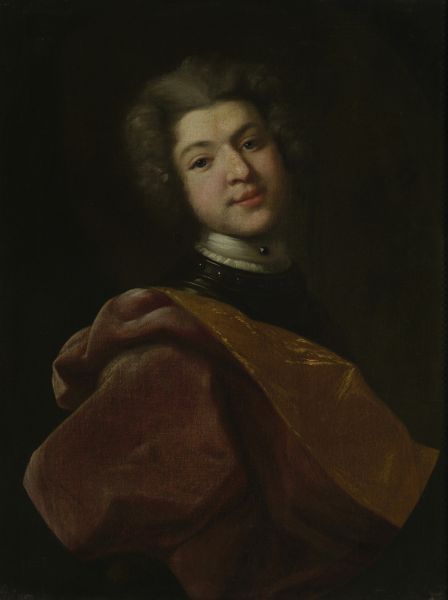|
|
Portrait of Baron Sergei Stroganov. 1726

Nikitin Ivan,
Oil on canvas
87 х 65 (овал, вписанный в прямоугольник)
State Russian Museum
Пост.: 1920 из ВОПХ; ранее (в 1905) – собственность князя П.П. Голицына в имении Марьино Новгородской губ.
Annotation
The work was first attributed to Ivan Nikitin in 1804 and there is no question of his authorship. This is one of the few works of the artist that was signed and dated. Researchers note that the technique of the portrait is very good, and it has been preserved better than other works, which makes the individual manner of the artist more apparent. A similar style is visible on his portraits of Prasovia Ioannovna and Anna Petrovna.
Sergei Stroganov (August 20, 1707 – September 30, 1756)
Youngest son of Grigory Stroganov, a prominent person and salt manufacturer, and his second wife Maria Yakovlevna, née Novosiltseva. Baron (from 1722), actual gentleman-in-waiting, Lieutenant General. Owner of a palace located on Nevsky Prospect, St Petersburg designed by Francesco Bartolomeo Rastrelli. Collector and founder of the Stroganov Art Gallery. In 1735 he married Sofia Kirillovna Naryshkina. His son, Alexander Stroganov, would become president of the Imperial Academy of Arts.
Author's Biography
Nikitin Ivan
Nikitin, Ivan Nikitich
1680s, Moscow (?) - After 1741
Painter, portraitist. Son of a Moscow priest, brother of Roman Nikitin. Possibly educated at the Armoury School of Printing in Moscow. Lived in St Petersburg (from 1711). Studied under Tommaso Redi in Florence as a fellow of Peter the Great (1716-19). Returned to Russia (1720). Court portraitist (from 1721). Painted life portraits of Peter the Great on Kronstadt (1715-21). Married and divorced Maria Fyodorovna Mamens, lady of the bedchamber to Empress Catherine I (1727). Arrested in St Petersburg in connection with the libelling of Archbishop Feofan Prokopovich (1732). Spent five years in the Peter and Paul Fortress. Exiled to Siberia (1737). Released by the Privy Council (1742). Died on the way from Siberia to Moscow.

